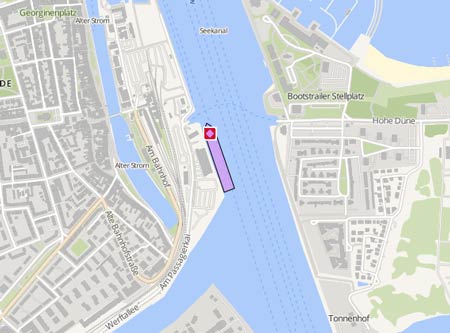CUAUHTEMOC BE 01
Course/Position
3 min ago
Latest ports
Latest Waypoints
Latest news
Repairs to be completed end of the month
The Mexican Navy was expecting the repairs to the 'Cuauhtémoc' to be completed by the end of September. Once delivered, the plan is for the ship to continue its training cruise with the cadets of the Heroic Naval School. Every year, it conducts a training cruise with naval cadets around the world, as an exercise in diplomatic relations and training for the country's next sailors. Currently, the 'Cuauhtémoc' remained at the Caldwell Shipyard on Staten Island, near New York City. It is in the final phase of its repair. The Navy authorities were currently verifying the repair work and working to adapt the safety systems to continue the mission. Once the repairs are completed, the naval cadets will gather in New York to continue their training cruise and return to Mexico via the New York-Cozumel, Quintana Roo-Progreso, Yucatán route, arriving at the Port of Veracruz in November to complete the mission and graduate in 2026. The United States National Transportation Safety Board (NTSB) is currently conducting the relevant investigations into the accident, and it is estimated that the final report will be released in the coming months. Regarding repair costs, the ship's insurance company covered the approximately half-million dollars caused by the allision on May 17.
NTSB released preliminary report into allision in New York
The National Transportation Safety Board has released its preliminary report on the allision of the ARM 'Cuauhtémoc BE 01' with the Brooklyn Bridge. According to the report, the vessel, with 277 crewmembers and cadets aboard, was departing from Pier 17 in Manhattan. The incident began when the barque was maneuvering away from the pier with assistance from the tug 'Charles D. McAllister'. The vessel’s reported air draft was 158 feet, while the Brooklyn Bridge’s vertical clearance at mean high water is documented at 127 feet. At the time of departure, both a sea pilot and a docking pilot were aboard the vessel, positioned with the ship’s captain on the open conning deck. Weather conditions were favourable with westerly winds 10-15 knots and clear visibility. The ship struck the underside of the Brooklyn Bridge at approximately 8.24 p.m. at a speed of about 5.9 knots astern. Following the impact, the vessel continued astern under the bridge, with its stern contacting a seawall on the Brooklyn side of the East River. Emergency responders arrived around 8.30 p.m. transporting injured crew members to local hospitals. The vessel was later towed to Pier 36 in Manhattan. The estimated damage was expected to exceed $500,000. Also the rudder was bent in the allision. Inspectors from the New York City Department of Transportation assessed the damage to the Brooklyn Bridge, finding “no significant structural damage. Their assessment identified impact points to the traveler rail, minor scrapes to paint on a main bridge span, and damage to a maintenance platform’s docking area. The NTSB investigation is ongoing, with investigators examining the propulsion system, operating control system, relevant crew experience and training, and operating policies and procedures. Drug and alcohol tests for both pilots and the tug captain were negative. Full interim report: https://www.ntsb.gov/investigations/Pages/DCA25MM039.aspx
Repairs continued at Caddel Shipyard
The "Cuauhtémoc," was transferred to a second shipyard, the Caddel Shipyard in Staten Island, on the afternoon of June 23 in order to continue its repairs. It had stayed for two weeks at the GMD shipyard in Brooklyn, where it had been for two weeks. Prior to ithe start of repairs, the sail training ship had remained docked for 20 days at Pier 36 in Manhattan, near the allision site at the Brooklyn Bridge.
Upload News

